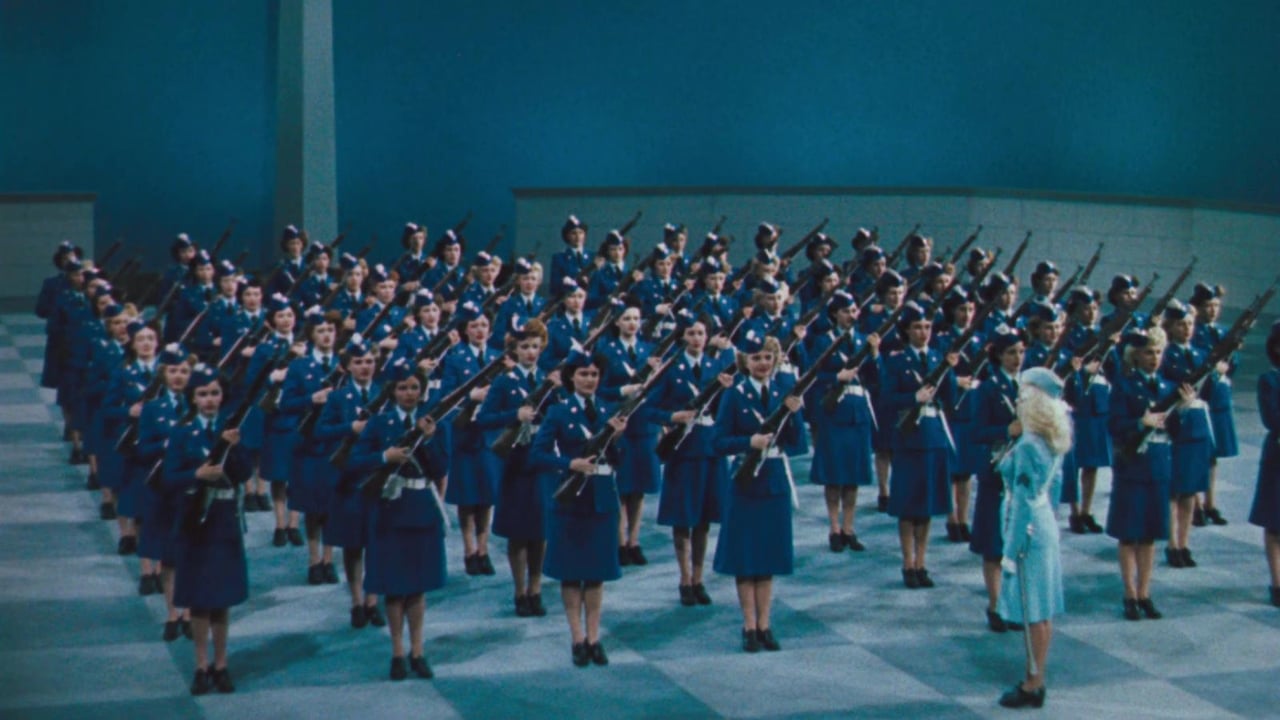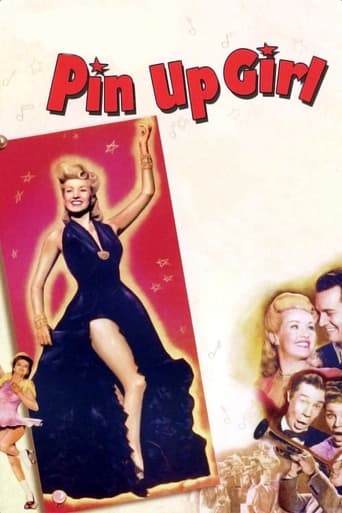



an ambitious but ultimately ineffective debut endeavor.
View Moreif their story seems completely bonkers, almost like a feverish work of fiction, you ain't heard nothing yet.
View MoreWhile it is a pity that the story wasn't told with more visual finesse, this is trivial compared to our real-world problems. It takes a good movie to put that into perspective.
View MoreA film of deceptively outspoken contemporary relevance, this is cinema at its most alert, alarming and alive.
View MoreThis movie has everything going for it – great cast, competent director and a screenplay originally prepared by Hollywood's top writing team of Robert Ellis and Helen Logan. Alas, the studio brought in Earl Baldwin to revise the script, when studio head, Darryl Zanuck, decided to use the movie as a boost wartime vehicle for Betty Grable. Now I know a lot of people love Betty Grable. She has lots of pep, I'll give her that, but for me, peppy is not a quality that appeals unless it's firmly based on common sense. And although Betty was strong on brain power in real life, on the screen she was almost always cast as an idiot. "Pin Up Girl" is no exception. This time, she promises to marry almost every serviceman who accosts her, even though she has no intentions whatever of doing so. This is her way of boosting the morale of the servicemen, but, as you and I know, it's an idea laced with peril, particularly if we take her stratagem a step further and realize that it's based on a latent idea that the servicemen will be killed in action. For me, this puts a shadow over the whole movie. And there were other things I didn't like. I mean, just about all the characters are idiots. How could anyone be so stupid that they couldn't recognize Grable, even though she might be wearing glasses and slightly change her hair style. This sort of stratagem will work on the stage, but it's unsuitable for movies – unless, of course, you make the character a twin. And alas, I thought the marching girls outstayed their welcome too. They repeat their moves at least ten times. Even five would been more than sufficient, especially as their uniforms are so unattractive. Joe E. Brown is disappointingly cast in an inconsequential role (he doesn't even get a chance to use his famous yell) and hero John Harvey as he himself admitted, lacks screen charisma (though evidently he came over extremely well on the stage). So, all told, this is a very disappointing movie riddled with problems. Available on an excellent Fox DVD.
View MoreSplashy Technicolor musical with Betty Grable and Martha Raye has beautiful photography, Grable's incredible legs--although they're not featured as much as you'd think they'd be, considering they were what she was most famous for--and not a whole lot more. The musical numbers are for the most part uninspired, and the casting of unknown John Harvey as Grable's romantic interest was a big mistake. He's a bland, not particularly good actor who tries too hard to be the peppy "boy next door" type and has no chemistry at all with Grable. Dorothea Kent as Grable's sidekick is enjoyable but for some reason she vanishes about halfway through the film. Martha Raye, as always, gives it her best but the songs they stuck her with are, to be charitable, pedestrian and, in the case of "Yankee Doodle Hayride", downright stupid. Grable's "Don't Carry Tales Out of School" is boring--I have no idea why it's performed two different times in the film, as it doesn't get better with repetition. Raye's "Red Robins, Bobwhites and Bluebirds" is a juvenile time-waster and she looks almost embarrassed performing it--the lyrics are childish and the song makes virtually no sense. Just about the only number that has any spark at all is "Once Too Often", which Grable dances with the great Hermes Pan. It's not one of his or Grable's best, but compared to the rest of the numbers in this picture, it's a masterpiece. Joe E. Brown is an acquired taste, which I haven't acquired, but if you like him I guess this is as good a place to see him as any. The tap-dancing Condos Brothers are good, there's a campy but somewhat entertaining roller-skating number early in the film and a very bizarre and really out-of-place sequence at the end where Betty is a drill sergeant putting a female drill team through a series of complicated marching routines--it's almost surreal to watch her carrying a sword and shouting "Dress that line, there!" and "Hup, hip, hoop, harch!"--but even that dose of wartime weirdness doesn't do much for the picture. Overall it's a lower-rank, by-the-numbers effort from people who've done far better. Worth a look maybe just so you can say you've seen it, but other than that, there's not much reason to spend any time on it.
View MoreNote that the legendary Hermes Pan is the guy dancing with Grable in the wild "Once Too Often" number. He was the guy who worked with Fred Astaire to choreograph and practice most of his dance numbers in the 30's Fred-and-Ginger films.
View MoreThis musical/comedy fluff was harmless fun for a nation at war. We get the troop's number one pinup gal, big band music, song and dance numbers, a cotton candy plot, and it's all in Technicolor! Anybody interested in the WWII era will enjoy watching this film, just imagine yourself as one of the boys in uniform or as Rosie the Riveter. The final musical routine with Betty marching with & drilling 2 companies of military women is well executed and must have been just what America wanted to see at the time. Remember: Buy U.S. War Bonds. Available at this theater.
View More